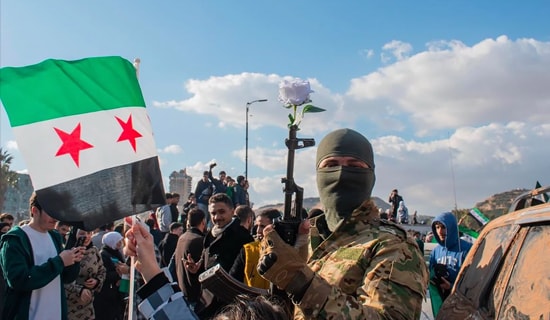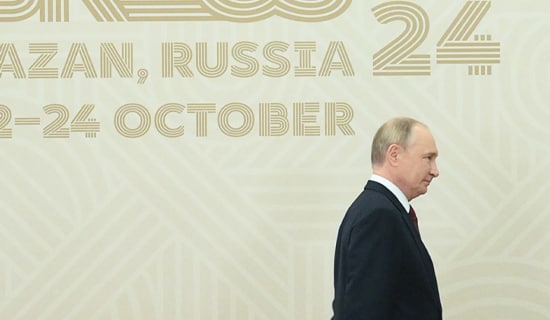Introduction
Elections for the Eighth Majlis were held March 14, 2008 in Iran. As in previous elections, the Iranian regime continued in its elimination of reformist political representation. Most reformist candidates in these elections were disqualified by the Guardian Council, the conservative body constitutionally authorized to vet Majlis candidates which is headed by Ayatollah Ahmad Jannati.
With the reformists out of the way [1], the elections for the Eighth Majlis were reduced to an arena for the struggle between the various conservative factions, i.e. radical conservatives who support Iranian President Mahmoud Ahmadinejad, and other traditional conservatives, including his critics, who oppose him.
Implications of the Elections: Structural Change to Iran's Islamic Regime - Elimination of Reformist Political Representation, De Facto Abolition of Velayat-e Faqih (Rule of the Jurisprudent)
The regime's efforts to eliminate any reformist political representation include not only disqualification of reformist candidates, but also the banning of reformist activity, including the publication of papers and the activity of women's organizations. [2]
In the run-up to the June 2005 presidential election that put Mahmoud Ahmadinejad in power, Iranian Supreme Leader Ali Khamenei was still emphasizing that the Iranian regime consisted of a conservative and a reformist "wing," each balancing the other and both loyal to the regime. When, in that election, the Guardian Council disqualified all reformist candidates, Khamenei ordered it to accept the two most prominent reformist candidates, Mostafa Moin and Mohsen Mehralizadeh. [3]
However, in the campaign for the Eighth Majlis elections, the reformists were de facto eliminated, with Khamenei's consent.
The ayatollahs loyal to the regime, led by Khamenei - who in effect oversee and direct Iran's political system from behind the scenes - would rather build the foundation of the country's political system by placing former IRGC officers, whom they see as loyal to the regime, in official positions. Thus, all branches of Iran's political system are being infiltrated by the military, who implement the policies of Ahmadinejad under Khamenei's oversight. Furthermore, Khamenei is broadly using the IRGC cadres to establish his own loyal support base, thus not only agreeing to allow IRGC members into the government, the Majlis, and other state institutions, but actively encouraging them to do so, and to establish themselves firmly within them.
With these moves, Khamenei is violating Ayatollah Ruhollah Khomeini's strict ban on military personnel entering the political sphere. In the past two years, the military's takeover of the political system had become nearly complete, and the Eighth Majlis elections results gave the final approval to the elimination of Khomeini's principle of Velayat-e Faqih, the rule of the jurisprudent. [4]
The takeover of the regime was noted by MEMRI in a special report published soon after Ahmadinejad was elected president in June 2005 (see MEMRI Inquiry & Analysis No. 229, "Iran's 'Second Islamic Revolution'"). [5] According to the report, "with the results of the June 2005 election, Khamenei and his conservative followers in the religious establishment and in the military (i.e. in the IRGC and the [paramilitary] Basij [organization]) have completed their 'Second Islamic Revolution'... aimed at consolidating their control over the centers of power at all levels: the municipalities, the Majlis, and the presidency... Prior to the elections, the military apparatus, the judicial system, and the religious establishment had already been in the hands of the conservative circles... The 'Second Islamic Revolution' also seems to involve the rise of the younger generation, with the regime's top executive posts being held by conservatives of the 'middle generation' of the Islamic revolution. Despite statements by Khamenei that the regime is based on two 'wings,' i.e. reformist and conservative, all branches of the government are now in the hands of the conservatives." http://www.memri.org/legacy/report/1402
Staged Elections: A Policy of Eliminating the Reformists, Fraud, Low Turnout
The elections for the Eighth Majlis were marked not only by the disqualification of most of the reformist candidates, but also by claims of massive election fraud and other violations. There were complaints that the IRGC and the Basij interfered at polling places, and actually took over oversight of the polls in many provinces. [6]
While official sources reported voter turnout at 65%, some conservative circles insisted that it was 73% or higher, "showing" popular support for the regime. [7] Interestingly, the regime claimed the turnout in Tehran was 40%, but both conservative and reformist sources said that it was much lower, placing it at 30% or less. [8]
The Tehran elections results are of special interest because the district has the most Majlis members, 30, and also because of Tehran's relative importance as the capital. While Tehran's reformist representation has always been very significant, in recent elections a pattern of boycotting by reformist voters has emerged, aimed both at protesting against the reformist leaders' failure to deliver on their promises of individual and political freedoms and against the regime's repeated removals of reformists serving as publicly elected officials. [9]
Along with the political protests expressed by the boycott of the polls, it is apparent that reform-supporting voters are disappointed, alienated, and apathetic, particularly in light of the regime's comprehensive moves to repress freedom of expression by closing dozens of reformist papers, arresting journalists for criticizing the regime, and disqualifying reformist public figures, some currently in office, from running in the elections. [10]
It appears, therefore, that this time too most voters in Tehran preferred to boycott the elections. Indeed, preliminary releases of the results for the Tehran province show that about half of the candidates will have to participate in the next round of elections, expected to be held on April 25. Another notable statistic that emerged was that in Tehran, a district identified with the reformists, not even one reformist Majlis member was elected. [11]
The Majlis - An Arena for Personal Rivalries
Since Iran has no deeply rooted tradition of ideological parties with differing economic, social, and other platforms, political affiliations and loyalties are based primarily on personal ties. For example, among the prominent figures who will apparently run for Majlis speaker are current speaker Gholam Ali Haddad-Adel, an associate of President Ahmadinejad, as well as Ahmadinejad's rival Ali Larijani, who in 2005 ran against him in the presidential election and who recently resigned from his post as Supreme National Security Council secretary, apparently due to differences of opinion with Ahmadinejad over Iran's nuclear policy. [12]
In the March 14 elections, Larijani chose to run in the Qom district, where he knew he would have the support of the traditional ayatollahs. A third candidate for Majlis speaker is Tehran Mayor Mohammad Baqer Qalibaf, who was also a presidential candidate in 2005, and who seeks a position in national politics. All three candidates are conservatives and are loyal to Supreme Leader Khamenei.
The Iranian Leadership in the Wake of the Elections: Khamenei, Ahmadinejad, Rafsanjani, Pro-Regime Ayatollahs
The election results have no significant impact on the decision-making processes in Iran's political system, because that power rests first and foremost with Supreme Leader Ali Khamenei, with President Mahmoud Ahmadinejad, who sets out domestic and foreign policy by means of his government, and with various councils of appointees, such as the Supreme National Security Council, which handles Iran's nuclear policy.
As a supervisory body, the Majlis is largely toothless, and essentially serves as a platform for political head-butting and criticism, mostly veiled, of the government's policies - and, primarily, to enhance Iran's image abroad by creating an appearance of democracy.
Despite the public criticism in the conservative Seventh Majlis of Ahmadinejad's handling of domestic affairs, Ahmadinejad has recently gained the public support of Supreme Leader Ali Khamenei. Recently, Khamenei praised Ahmadinejad's handling of and political achievements in the nuclear issue, in front of regime leaders - among them Ahmadinejad's main political rival Rafsanjani. [13]
It should be noted that in the past two years, Rafsanjani has managed to increase his status as the regime's second most powerful man, and as a counterweight to Ahmadinejad and his faction. [14] However, it does seem that Ahmadinejad has managed to tip the balance in his own favor, gaining the open support of Supreme Leader Khamenei.
In light of the results of the elections for the Eighth Majlis, and in light of the de facto abolition of Ayatollah Ruhollah Khomeini's principle of Velayat-e Faqih, the rule of the jurisprudent, by filling the government with ex-military activists, several questions arise, which will be resolved in the coming months:
To what extent is Khamenei a force leading, directing, and maneuvering between the various behind-the-scenes coalitions and power groups, and to what extent is he led by the ayatollahs loyal to the regime such as Ahmad Jannati?
How do the ayatollahs loyal to the regime treat Rafsanjani, and how do they treat Ahmadinejad?
How much freedom does Ahmadinejad have in setting policy? What is his radical faction's attitude to Supreme Leader Khamenei, particularly after its mentor, Ayatollah Taqi Mesbah-e Yazdi, was defeated in the recent Assembly of Experts election?
What are the power relations between the radical conservatives and the traditional ayatollahs?
It seems that Supreme Leader Khamenei is acting in accordance with the 2,500-year-old institution of the traditional Persian shah. But the question still remains: What kind of shah? Is Khamenei today pulling the strings and directing the various power groups as he sees fit, or is he a puppet-shah, manipulated by pressure groups in the leadership, in order to survive politically?
*A. Savyon is Director of the Iranian Media Project; Y. Mansharof is a research fellow at MEMRI.
[1] For an interview with former Iranian vice president Mohammad-Ali Abtahi, of the reformist camp, in which he accuses the conservatives in the regime of disqualifying reformist candidates out of fear of losing the elections, see MEMRI-TV Clip No. 1719, http://www.memri.org/legacy/clip/1719.
Also see the complaint by reformist activist Masumeh Ebtekar, former vice president under president Mohammad Khatami, on the disqualification of most of the reformist candidates, Gulf News, UAE, March 24, 2008.
[2] In the 2004 Seventh Majlis elections, over 2,000 reformist candidates were disqualified (See MEMRI Special Dispatch No. 713, "The Political Debate in Iran Following Elections for the Seventh Majlis," May 12, 2004, http://www.memri.org/legacy/report/1127 ).
[3] See MEMRI Inquiry & Analysis No. 226, "The Upcoming Presidential Elections in Iran (Part II)," June 16, 2005, The Upcoming Presidential Elections in Iran (Part II).
[4] Many agree that the principle of velayat-e faqih, or "rule of the jurisprudent," was gravely violated when Khamenei was appointed Supreme Leader, because he did not possess the necessary religious qualifications. With military personnel now in all decision-making and executive positions, the principle of velayat-e faqih has been completely stripped of significance.
[5] Iran's ‘Second Islamic Revolution’: Fulfilled by Election of Conservative President.
[6] In a letter to the Guardian Council, reformist leaders Mohammad Khatami and Mehdi Karroubi asked for a recount of the Tehran votes due to widespread fraud, stating: "Many observers who were present at the voting booths and who [witnessed] the counting of the votes, as well as other reliable sources, report inconsistencies between the results [declared for Tehran] and the actual [numbers of] ballots placed into the ballot boxes." www.norooznews.ir, March 19, 2008. Ayatollah Abolhassan Nouri, prayer leader in the city of Khorramshahr, likewise criticized the many instances of fraud in the Majlis election, and in the voting in the city. He noted that there was evidence and documentation of bribery, fraud, and intimidation of voters. Tabnak, Iran, March 24, 2008.
[7] Fars (Iran), March 15, 2008.
[8] Kayhan (Iran), March 16, 2008; Rooz (Iran), March 17, 2008. Tehran elections headquarters director Mohammad Larijani claimed that turnout was higher than 40%. Fars, Iran, March 15, 2008. An editorial titled "What is the Message of the Eighth Majlis Elections?" posted on Tabnak, which is affiliated with Expediency Council Secretary Mohsen Rezai, stated that the low turnout in Tehran - about 30% - should serve as a warning to the conservatives. Tabnak, Iran, March 18, 2008.
[9] Many reformists also boycotted the February 2003 municipal elections and the February 2004 elections for the Seventh Majlis, to protest against the Guardian Council's mass disqualification of reformist candidates. This resulted in a low voter turnout of less than 50% in both elections. See MEMRI Inquiry & Analysis No. 229, "'Iran's 'Second Islamic Revolution': Fulfilled by Election of Conservative President," June 28, 2005, Iran's ‘Second Islamic Revolution’: Fulfilled by Election of Conservative President .
[10] Two Tehran mayors were removed by conservatives, allegedly for corruption. This led to apathy among the city's electorate, resulting in an especially low turnout of only 15% for the 2003 municipal elections - thus allowing the election of the conservative candidate, Mahmoud Ahmadinejad, to the post of mayor - a post he used as a springboard to the presidency. See MEMRI Special Dispatch No. 713, "The Political Debate in Iran Following Elections for the Seventh Majlis," May 15, 2004, The Political Debate in Iran Following Elections for the Seventh Majlis ; Special Dispatch No. 689, "Iranian Youth Organization to Supreme Leader Khamenei: 'What A Huge Lie You Are Telling!,'" April 1, 2004, Iranian Youth Organization to Supreme Leader Khamenei: 'What A Huge Lie You Are Telling!'.
[11] IRNA, March 18, 2008. The only reformist representative elected so far is Majid Ansari, in 29th place. However, he too will need to run in the second round of elections.
[12] The Iranian regime warned the media not to cover or analyze either the rivalry between Larijani and Ahmadinejad, or the reasons for Larijani's resignation. Nevertheless, Mohammad Reza Bahonar, who headed Larijani's campaign headquarters for the 2005 presidential election, said that the relations between the two had "reached an impasse" and that they "could not continue to cooperate." Rooz, Iran, October 25, 2007.
[13] IRNA (Iran), February 26, 2008.
[14] See MEMRI Inquiry & Analysis No. 229, "'Iran's 'Second Islamic Revolution': Fulfilled by Election of Conservative President," June 28, 2005, Iran's ‘Second Islamic Revolution’: Fulfilled by Election of Conservative President .





